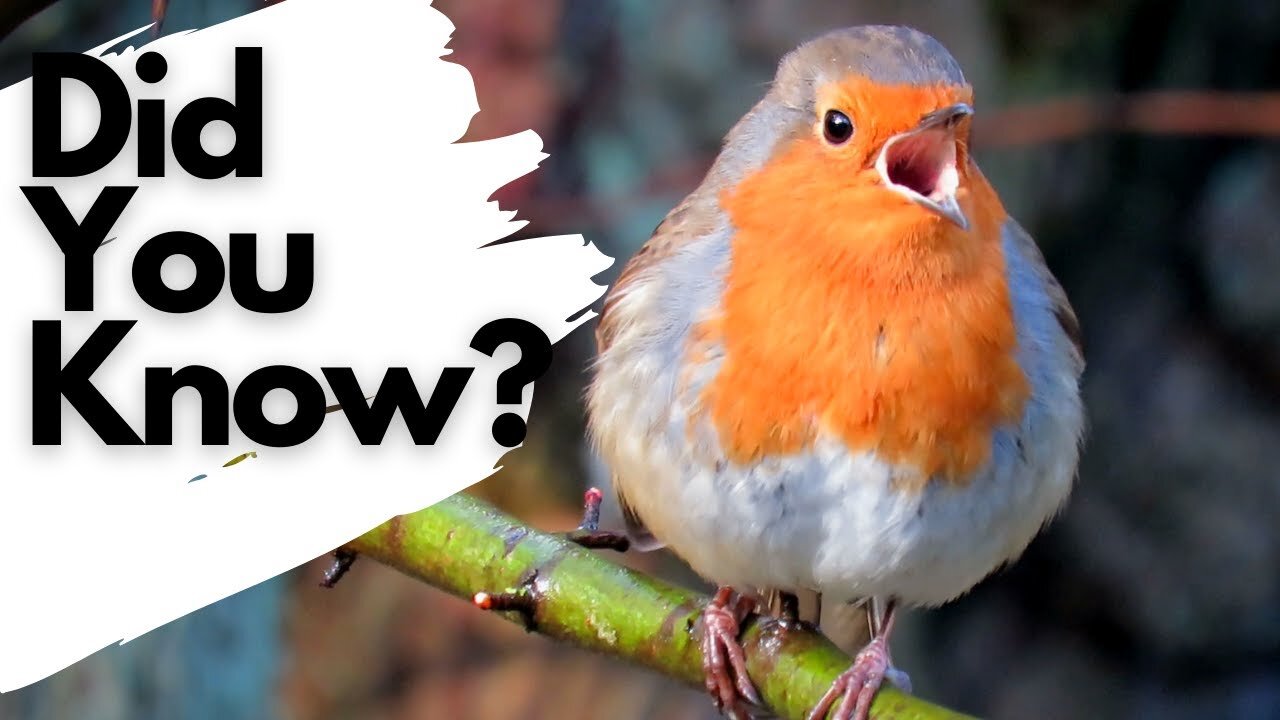Premium Only Content

Things you need to know about ROBINS!
Robins have long been considered as the UKs favourite bird so it is only fitting that they are also the unofficial national bird of the Country. There is some great news for fans of them too as their numbers seem to be on the rise. They are currently the seventh most common garden bird and it is estimated that there are almost seven and a half million of them in the UK.
Robins are quite a small bird, with a 21 cm wingspan and weighing just 14-21 grams. Their most notable feature is their bright red or orange breast and face. They also have brown wings, tails and heads and the feathers on the undersides are white or cream. Despite various suggested ways to tell the males from the females, such as the vibrancy of the red on their breasts, or the darkness of their wing feathers, the truth is that from a distance it is almost impossible to be certain if a robin is male or female. Even their behaviour is not a guarantee as there have been reporting’s of females mounting males during copulation.
Throughout the summer a robins diet mainly consists of invertebrates such as spiders, insects and worms, but during the colder months they will also eat fruit, berries and seed and suet from bird feeding stations. Although they are most common in gardens, parks and deciduous woodlands, they are found in pretty much every habitat.
Despite the difficulties that people may have in separating male and female robins, they don’t seem to have this problem themselves. They spend the late winter roaming outside of their usual territories trying to find a mate and once they do nest building can begin. This usually starts in early march and the nest, a cup of moss and dead leaves lined with hair can be built in the most unusual of places, including empty shoes, under car bonnets, and even in water cans. Naturally they will try to nest close to or on the ground amongst dense vegetation. Each female will lay between 4 and six spotted cream coloured eggs which only the she will incubate alone for 14 days until they hatch. When they do, both parents feed the chicks, who take a further 14 days to leave the nest. It can take more than 14 days for a robin chick to fully grow its flight feathers so sometimes they leave the nest without being able to fly. Young robins are a similar shape and size to their parents but completely lack the red breast. Robins will have 2 or sometimes 3 nests within a season but their nests are very susceptible to predation, only around 57% of the eggs they lay will survive to the point of fledging the nest.
After fledging the nest Robins don’t have a very long life expectancy. The average in the wild is around 2 years but one bird that was ringed in 1969 was found dead 8 years later in 1977. With their close relationship to humans and their adaptability to live in an urban environment, there are currently no threats to Robin populations in the UK.
Some of the footage and images in this video were obtained using creative c
-
 LIVE
LIVE
Game On!
14 hours agoJustin 'TUGGER' has been RELEASED by the Ravens!
1,011 watching -
 LIVE
LIVE
BEK TV
23 hours agoTrent Loos in the Morning 5/6/2025
1,342 watching -
 18:34
18:34
Clownfish TV
1 day agoSnow White Flopped HARDER Than Joker 2 Did?!
27.4K22 -
 18:47
18:47
CatfishedOnline
1 day agoShe Sent Her Life Savings in Gift Cards… To a Romance Scammer
23.1K17 -
 10:54
10:54
China Uncensored
17 hours agoThis is Why China Will Lose the Trade War
27.7K31 -
 27:11
27:11
World2Briggs
15 hours ago $3.11 earnedI Went To The Protest Capital Of The United States
28K11 -
 6:13
6:13
scoutthedoggie
20 hours agoClose-Quarters Airsoft gameplay Scotland 2025
14.5K2 -
 5:08
5:08
The Shannon Joy Show
14 hours agoDr. David Martin: Bio-Terror SHOCKER! Is The Pentagon Planning Another Crisis On July 4?
24.6K3 -
 10:04
10:04
VSOGunChannel
17 hours ago $1.40 earned2nd Amendment Civil Rights Task Force: Gun Grabber Nightmare? or More Wind?
16.3K4 -
 3:28
3:28
The Official Steve Harvey
16 hours ago $1.66 earnedThe Funniest 😂 & Cheesiest 🧀 Pickup Lines Ever! I Steve Harvey
29.1K2